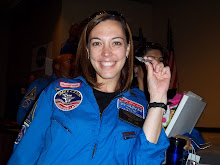The principles of Universal Design for Learning (UDL) and Differentiated Instruction (DI) both encompass the idea that all children can learn when given supports which meet their specific needs. In reality each child in a classroom brings both assets and needs. It is up to the teacher to implement a curriculum that caters to those assets and supports those needs. This does not mean providing a different lesson for each child, but rather a variety of ways for students to access the curriculum, engage in the standards, and demonstrate that they have mastered the content. It is also not about fixing a broken child, but rather about fixing a mode of delivering content that is not reaching every child equally. Teachers need not be overwhelmed with putting into practice the principles of UDL and DI, as it is always better to start small, practicing in small amounts and then branch out as both the teacher and students become accustomed to this kind of instruction. DI is not a new idea, but rather something that has been around since the “one-room-schoolhouse” when all grade-levels learned content in one room, with one teacher. What is important is that all students have the same goal, and the teacher is flexible enough to allow students to engage in the curriculum in a way that meets their various learning styles, interests, and readiness-levels.
This course provided a unique way for teachers to collaborate on resources for differentiating instruction in order to support UDL and DI in the classroom. Using Google Groups was easy, efficient, and provided a way to share resources on a social network and provide feedback to one another about them. Participating in conference calls with my group further connected us to the group and made the online sharing a little more personable. Now, I have an online repository to return to for resources as I encounter areas of need within my classroom. I have already used some of the resources I gained in my research, as well as those shared by group members to use technology to present information in different ways in my classroom, assess student understanding, and engage learners.
I have learned that technology can be the “hook” which engages students, while also serving as the platform through which students demonstrate mastery of content. Technology can be used in a variety of ways to differentiate instruction, such as through the use of video/audio clips; online textbook resources, including text-speech; handheld devices; Individual Response Systems; laptops/Netbooks; PowerPoint; Digital Storytelling; I-searches and research projects; and virtual labs or simulations. I personally have already integrated more audio/video clips, online textbook resources, Personal Response Systems, and Netbooks into my science curriculum, with plans to branch out to I-searches, student PowerPoints, and Digital Storytelling as the year unfolds. The point is that using technology is not just another thing to do in a classroom, but it offers variety in the ways that students engage in content, it promotes student understanding of content, and it clarifies the learning targets for a classroom…in other words, it helps to maintain a curriculum that is of high-quality for all learners.
References
Laureate Education, Inc. (Producer). (2009a). Program one. Reaching and Engaging All Learners Through Technology [Motion picture]. Reaching and engaging all learners through technology. Baltimore: Author.
Laureate Education, Inc. (Producer). (2009b). Program ten. Knowing Your Students [Motion picture]. Reaching and engaging all learners through technology. Baltimore: Author.
Laureate Education, Inc. (Producer). (2009c). Program eleven. Learner Difference [Motion picture]. Reaching and engaging all learners through technology. Baltimore: Author.
Laureate Education, Inc. (Producer). (2009d). Program twelve. Universal Design for Learning [Motion picture]. Reaching and engaging all learners through technology. Baltimore: Author.
Laureate Education, Inc. (Producer). (2009e). Program fourteen. Introduction to Differentiated Instruction [Motion picture]. Reaching and engaging all learners through technology. Baltimore: Author.
Laureate Education, Inc. (Producer). (2009f). Program fifteen. What is Differentiated Instruction? [Motion picture]. Reaching and engaging all learners through technology. Baltimore: Author.
Laureate Education, Inc. (Producer). (2009g). Program sixteen. High-Quality Curriculum [Motion picture]. Reaching and engaging all learners through technology. Baltimore: Author.
Sunday, October 31, 2010
Subscribe to:
Post Comments (Atom)





No comments:
Post a Comment